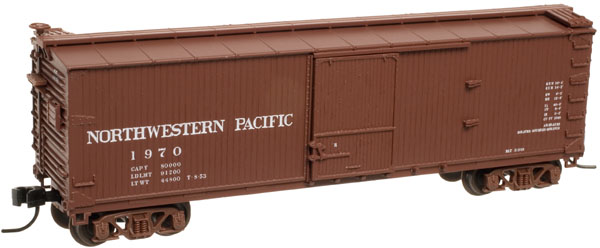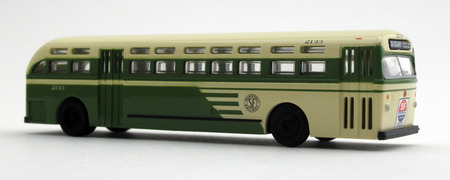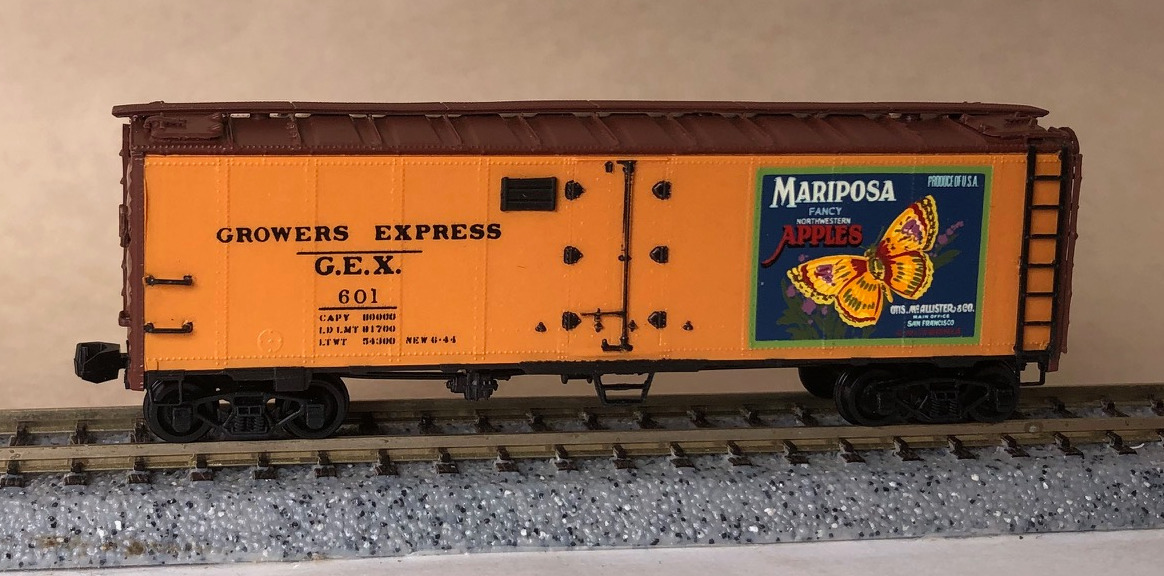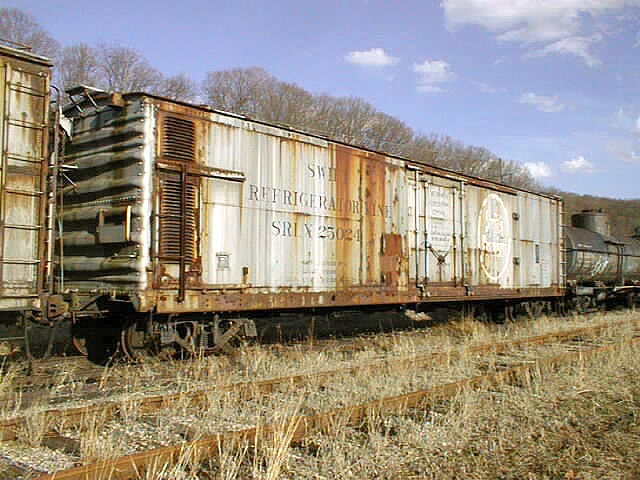Con-Cor - 1675L - Reefer, 50 Foot, Mechanical - Peter Hand Brewery - 63423
| Stock Number | 1675L |
| Tertiary Stock Number | 001-1675L |
| Original Retail Price | $2.00 |
| Brand | Con-Cor |
| Manufacturer | Con-Cor |
| Body Style | Con-Cor Reefer 50 Foot Modern |
| Image Provider's Website | Link |
| Prototype Vehicle | Reefer, 50 Foot, Mechanical (Details) |
| Road or Company Name | Peter Hand Brewery (Details) |
| Reporting Marks | URTX |
| Road or Reporting Number | 63423 |
| Paint Color(s) | White |
| Print Color(s) | Red & Gold |
| Paint Scheme | Old Chicago Beer |
| Additional Markings/Slogan | Peter Hand Brewery |
| Coupler Type | Rapido Hook |
| Coupler Mount | Truck-Mount |
| Wheel Type | Nickel-Silver Plated Metal |
| Wheel Profile | Standard |
| Release Date | 1973-01-01 |
| Item Category | Rolling Stock (Freight) |
| Model Type | Reefer |
| Model Subtype | 50 Foot |
| Model Variety | Mechanical |
| Prototype Region | North America |
| Prototype Era | NA Era IV: 2nd Gen Diesel (1958 - 1978) |
| Scale | 1/160 |
| Track Gauge | N standard |
Prototype History:
The purpose of a mechanical reefer is to keep perishable items cold. Early reefers were of all wood construction and used ice for cooling. By the 1940s, new reefers were being built entirely of steel. Insulating techniques improved to the point where economical refrigeration could be accomplished using steel side plates in place of wood sheathing. Fifty foot mechanical reefers date back to at least the late 50s / early 60s.
The mechanical reefers could keep a more regular temperature, and often times colder than what the ice bunker cars were capable of. Initially mechanical reefers were used primarily in frozen food service. This would soon change as mechanical refrigeration began to replace ice-based systems. Soon after, mechanical refrigeration units replaced the “armies” of personnel required to re-ice the cars.
The first record of a 50' mechanical refrigerator car with a 6' plug door appears in the October 1954 Official Railway Equipment as with reporting marks FGEX 1000 - 1100. The January 1958 Official Railway Equipment Register lists over 600 of these cars. They appear with road numbers between 1000 and 1600. The build dates will fall between these two dates.
They were first acquired for orange juice service out of Florida. Similar cars were owned by WFEX and BREX. All were used in pool service with one another, depending upon the season. You can find a remaining prototype preserved in the NC Transportation Museum in Spencer, NC.
The mechanical reefers could keep a more regular temperature, and often times colder than what the ice bunker cars were capable of. Initially mechanical reefers were used primarily in frozen food service. This would soon change as mechanical refrigeration began to replace ice-based systems. Soon after, mechanical refrigeration units replaced the “armies” of personnel required to re-ice the cars.
The first record of a 50' mechanical refrigerator car with a 6' plug door appears in the October 1954 Official Railway Equipment as with reporting marks FGEX 1000 - 1100. The January 1958 Official Railway Equipment Register lists over 600 of these cars. They appear with road numbers between 1000 and 1600. The build dates will fall between these two dates.
They were first acquired for orange juice service out of Florida. Similar cars were owned by WFEX and BREX. All were used in pool service with one another, depending upon the season. You can find a remaining prototype preserved in the NC Transportation Museum in Spencer, NC.
Road Name History:
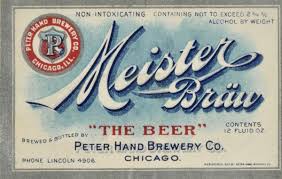 This company originated in a local brewery founded in 1891 on North Avenue by Peter Hand, a Prussian immigrant who had worked earlier for the Conrad Seipp Brewing Co. Before Hand died in 1899, his brewery already enjoyed considerable success with its “Meister Brau” brand. The enterprise survived Prohibition and employed nearly 600 people when it was purchased in 1965 by a group led by James Howard. Under the new management, the company was renamed Meister Brau Inc., and its operations expanded. By the end of the 1960s, annual production had reached one million barrels, and annual sales topped $50 million; this put Meister Brau among the top 30 beer companies in the United States. But the company was losing money, and in 1972 it sold its brand names to the Milwaukee-based Miller Brewing Co. When the Peter Hand Brewery closed in 1978, there was not a single brewery left in the city of Chicago.rn
This company originated in a local brewery founded in 1891 on North Avenue by Peter Hand, a Prussian immigrant who had worked earlier for the Conrad Seipp Brewing Co. Before Hand died in 1899, his brewery already enjoyed considerable success with its “Meister Brau” brand. The enterprise survived Prohibition and employed nearly 600 people when it was purchased in 1965 by a group led by James Howard. Under the new management, the company was renamed Meister Brau Inc., and its operations expanded. By the end of the 1960s, annual production had reached one million barrels, and annual sales topped $50 million; this put Meister Brau among the top 30 beer companies in the United States. But the company was losing money, and in 1972 it sold its brand names to the Milwaukee-based Miller Brewing Co. When the Peter Hand Brewery closed in 1978, there was not a single brewery left in the city of Chicago.rn

Brand/Importer Information:
Con-Cor has been in business since 1962. Many things have changed over time as originally they were a complete manufacturing operation in the USA and at one time had upwards of 45 employees. They not only designed the models,but they also built their own molds, did injection molding, painting, printing and packaging on their models.
Currently, most of their manufacturing has been moved overseas and now they import 90% of their products as totally finished goods, or in finished components. They only do some incidental manufacturing today within the USA.
Important Note: The Con-Cor product numbering can be very confusing. Please see here in the article how to properly enter Con-Cor stock numbers in the TroveStar database.
Currently, most of their manufacturing has been moved overseas and now they import 90% of their products as totally finished goods, or in finished components. They only do some incidental manufacturing today within the USA.
Important Note: The Con-Cor product numbering can be very confusing. Please see here in the article how to properly enter Con-Cor stock numbers in the TroveStar database.
Item created by: CNW400
on 2020-06-25 12:40:20
Last edited by: CNW400 on 2020-06-25 13:15:12
If you see errors or missing data in this entry, please feel free to log in and edit it. Anyone with a Gmail account can log in instantly.
Last edited by: CNW400 on 2020-06-25 13:15:12
If you see errors or missing data in this entry, please feel free to log in and edit it. Anyone with a Gmail account can log in instantly.





